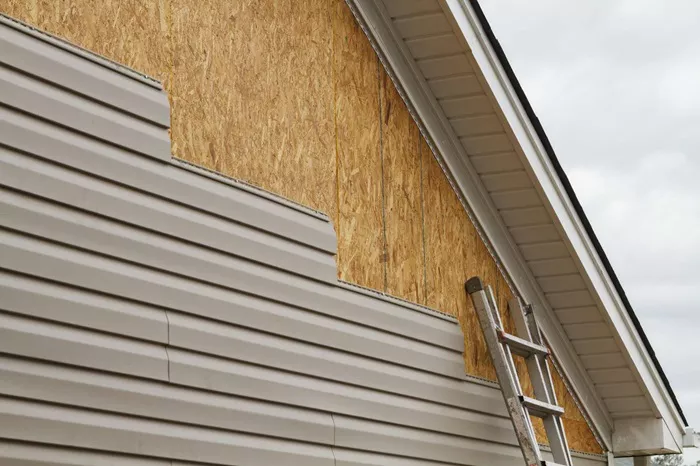Vinyl siding is a popular choice for exterior home cladding due to its durability, low maintenance requirements, and aesthetic appeal. The cost of installing vinyl siding varies based on several factors, including the type of vinyl siding, the size of the project, and regional labor rates. Here’s a detailed breakdown of the costs associated with vinyl siding to help you make an informed decision.
1. Types of Vinyl Siding and Their Costs
Vinyl siding comes in various styles and types, each with its own price range:
Standard Vinyl Siding
Overview: This is the most common type of vinyl siding, featuring a smooth finish and available in a range of colors. It is often used for basic home exteriors.
Cost Range: Typically costs between $2.50 and $5.00 per square foot. The price varies depending on the quality and thickness of the siding.
Textured Vinyl Siding
Overview: Textured vinyl siding mimics the appearance of natural materials like wood or stone. It provides a more traditional look compared to standard vinyl.
Cost Range: Generally costs between $3.00 and $6.00 per square foot. The price can increase based on the complexity of the texture and design.
Insulated Vinyl Siding
Overview: This type of siding includes a layer of insulation, which can improve energy efficiency and reduce heating and cooling costs.
Cost Range: Typically costs between $4.00 and $8.00 per square foot. The higher cost is due to the added insulation layer.
Vinyl Shake Siding
Overview: Vinyl shake siding mimics the look of cedar shakes or shingles. It is often used for accent areas or entire exteriors for a rustic appearance.
Cost Range: Usually costs between $4.50 and $9.00 per square foot. The cost depends on the style and quality of the shake pattern.
Vinyl Board and Batten Siding
Overview: This style features vertical panels with battens covering the seams. It offers a distinctive, contemporary look.
Cost Range: Generally costs between $5.00 and $10.00 per square foot. The price can vary based on panel width and design.
See also: How Much Is A Cord Of Wood? Understanding Costs And Measurements
2. Cost Factors Influencing Vinyl Siding Installation
Several factors can affect the overall cost of installing vinyl siding:
Square Footage
Overview: The total cost of vinyl siding is largely dependent on the square footage of the area to be covered. Larger homes or areas will naturally cost more.
Cost Impact: On average, vinyl siding installation costs between $7,000 and $15,000 for an average-sized home (approximately 1,500 to 2,500 square feet).
Quality and Thickness
Overview: Higher-quality and thicker vinyl siding tend to be more durable and may offer better insulation, but they come at a higher price.
Cost Impact: Investing in thicker or higher-quality siding can increase the overall cost by $1.00 to $3.00 per square foot compared to standard options.
Labor Costs
Overview: Labor costs for installing vinyl siding vary based on location, complexity of the project, and contractor experience.
Cost Impact: Labor typically accounts for 30% to 50% of the total cost. On average, labor costs can range from $2.00 to $4.00 per square foot.
Removal of Old Siding
Overview: If old siding needs to be removed before new vinyl siding is installed, this will add to the cost.
Cost Impact: Removal of old siding can cost between $1.00 and $3.00 per square foot, depending on the type and condition of the existing siding.
Additional Features and Accessories
Overview: Features such as trim, soffits, and fascia can add to the cost of installation.
Cost Impact: Additional features can cost between $1.00 and $3.00 per square foot, depending on the materials and design.
See also: How Much Does A Water Softener Cost?
3. DIY vs. Professional Installation
Deciding whether to install vinyl siding yourself or hire a professional can significantly impact the overall cost:
DIY Installation
Overview: Installing vinyl siding yourself can save on labor costs but requires time, effort, and some level of expertise.
Cost Impact: By doing it yourself, you might save 30% to 50% on labor costs. However, you will need to purchase tools and materials, and ensure proper installation to avoid potential issues.
Professional Installation
Overview: Hiring a professional ensures proper installation and can often provide a warranty on the work.
Cost Impact: Professional installation typically costs more but can provide peace of mind and potentially better results. Labor costs can range from $2.00 to $4.00 per square foot.
4. Long-Term Costs and Savings
While the initial cost of vinyl siding may seem high, it can offer long-term savings and benefits:
Maintenance Costs
Overview: Vinyl siding requires minimal maintenance compared to other materials like wood.
Cost Impact: Regular cleaning and occasional inspections are generally the only maintenance required, saving on long-term upkeep costs.
Energy Efficiency
Overview: Insulated vinyl siding can improve the energy efficiency of your home, potentially reducing heating and cooling costs.
Cost Impact: Savings on energy bills can offset the higher initial cost of insulated vinyl siding over time.
Resale Value
Overview: Vinyl siding can enhance the curb appeal of your home and may contribute to a higher resale value.
Cost Impact: The return on investment varies, but new siding can be an attractive feature for potential buyers.
Conclusion
The cost of vinyl siding varies based on type, quality, size of the project, and additional factors such as labor and removal of old siding. On average, homeowners can expect to pay between $7,000 and $15,000 for a typical installation. By considering factors like siding type, installation method, and long-term benefits, you can make an informed decision that aligns with your budget and home improvement goals.
Related Topics:

